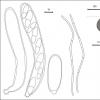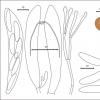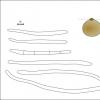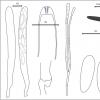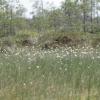
25-11-2016 13:54
 Stephen Martin Mifsud
Stephen Martin Mifsud
Hi, I found numerous seeds of Washingtonia robusta

21-10-2025 04:52
 Francois Guay
Francois Guay
I found what might be Chlorociboria aeruginella on

17-10-2025 18:45
 Riet van Oosten
Riet van Oosten
Hello, Found by Laurens van der Linde, Oct. 2025.

19-10-2025 18:58
 Bernard CLESSE
Bernard CLESSE
Bonsoir à toutes et tous,Il y a un peu plus de de

20-10-2025 09:36
 Nicolas VAN VOOREN
Nicolas VAN VOOREN
Hello.I'm searching for the following article:Bene

19-10-2025 14:10
Camille MertensBonjour à tous.Asco stipité 1mm de texture appar

23-09-2025 13:31
Thomas Læssøehttps://svampe.databasen.org/observations/10534623

15-10-2025 16:39
 Edvin Johannesen
Edvin Johannesen
These tiny (0.2-0.6 mm), white, pulvinate apotheci

03-10-2025 13:44
 Riet van Oosten
Riet van Oosten
Hello, Found by Laurens van der Linde on Populus

13-10-2025 19:05
Louis DENYBonjour forumSur tronc décortiqué de feuillu x,
Litter of Red cottongrass
Nina Filippova,
04-07-2013 06:10
Surprisingly, litter of Eriophorum russeolum showed other species (from Er. vaginatum). The ecology of these species, and the consistensy of their leaves are quite different, what probably influences fungal species composition. The leaves of Er. russeolum are thicker, but are not abundant, and lie scarcely in sphaghum hollows. Er. russeolum occupies wetter places at the bog, alongside with Scheuchzeria and Carex limosa and hydrophilic sphagna.
Five species collected from its leaves are two pyrenomycetes, two discomycetes and an anamorphic species. Other noticed species are shared with litter of Scheuchzeria (Leptosphaeria sp.) and of Er. vaginatum (anamorphic species with large oval conidia).
This perithecioid species with large spherical perithecia are very impressive. All what you could see at the surface is dark spot, but starting to delve deeper you suddenly realize that there is large balls, perithecia, hidden inside. The structure of hymenium is also very prominent, huge asci, abundant segmented paraphyses and large ellipsoid spores embedded in coating. (#4185 - https://www.cubby.com/pl/%234185/_fe42e98cf28042b9949f9131f75d45c2)
Second perithecioid species not less beautiful. Large two-celled spores with deep constriction are in fissitunicate asci, paraphyses thin and abundant, and the fruitbody is black ball about 200 mk, hidden under epidermis (only pore and dark area seen at the surface). (#4186 - https://www.cubby.com/pl/%234186/_61bcb9064680414cbcd7f41ada3fbac6)
The discoid species (probably Helotiaceae) was met several times at very wet, soft leaves. They are small orangish thick cups, with slightly lighter hymenial surface. Asci show euamyloid reaction of ring, spores are oval and slightly curved, and paraphyses some enlarged at tips and embedded in gelatinous substance. (#4187 - https://www.cubby.com/pl/%234187/_1fa833b8b8dc49788c3e64dd6fbaa242)
Myriosclerotinia sp. grew at fruit stems lying in wet hollows. Brown pubescent discs well seen at the surface. (#4191 - https://www.cubby.com/pl/%234191/_865906158f1141a89af308f04f74503b)
The last encountered species is very strange, probably anamorphic but i had not seen any conidiogenous cells there. The fruitbodies are near globose perithecioid structures. They are hidden under epidermis with darker spot seen at the surface. The conidia (if so) are long vermiform, hyaline, and some of them are septated. They are only the content of fruitbodies, a lot of them are tightly packed inside. (#4189 - https://www.cubby.com/pl/%234189/_81f88eaf6f894cdc979501f93775fa67)

